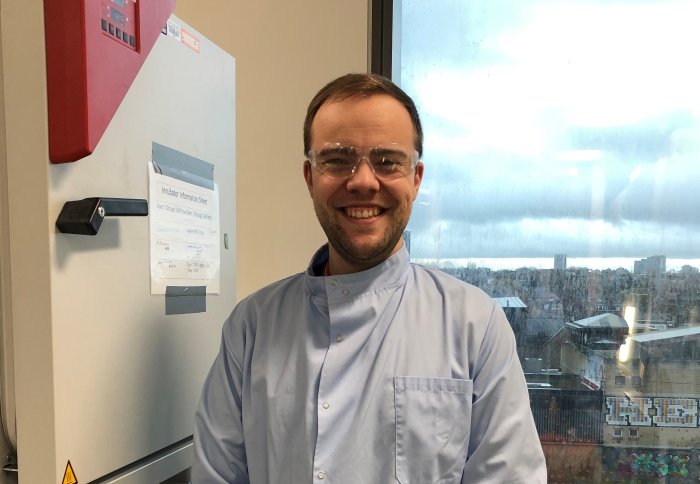A cell-active probe for PARP inhibitors

A new study from the Tate group describes the design and target profiling of a probe for PARP inhibitors published in ACS Chemical Biology
The PARP family of enzymes perform a variety of important roles in the cell, from DNA repair to cell cycle control, and researchers are looking for more sophisticated chemical tools to learn more about them. Ryan Howard, a third year PhD student, lead a study to develop a new probe that can be used to discover details about how therapeutic PARP inhibitors interact in the cell.
Ryan collaborated with researchers from AstraZeneca, and the results have now been published in ACS Chemical Biology. The new tool, PARPYnD, is a photoaffinity-based probe that can label PARP1 and PARP2 in the cell. PARPYnD was also found to label other “off target” components in the cell and was also used in competitive affinity-based experiments to find off-targets for other PARP inhibitor drugs. The research showed that PARPYnD could also inhibit isolated PARP6, but not PARP6 inside of human cells.
This work was supported by AstraZeneca and the Engineering and Physical Sciences Research Council.
Article text (excluding photos or graphics) © Imperial College London.
Photos and graphics subject to third party copyright used with permission or © Imperial College London.
Reporter
Edward Bartlett
Department of Chemistry